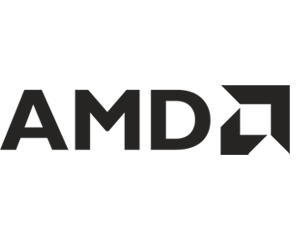“Availability of data is really critical for AI,” he adds. The company’s EPYC processors, Instinct accelerators and ROCm software, which drive the world’s top supercomputers, can be used for data management and to train large-scale AI models that help medical professionals detect and diagnose cancer at earlier stages. By deploying a system that assists physicians to make a diagnosis by using AI, we’re easing up the workflow for better outcomes and allowing the specialist to focus on the patient."
He adds that, for real-time inferencing, AMD offers various types of accelerators and optimized software tools that are purpose-built for AI.
“We have an AI-centric set of tools, frameworks and libraries that sit on top of our Vitis unified software platform, called Vitis AI, which uses deep-learning processing units to process repetitive tasks at top speed, with low latency and high accuracy,” Bhattacharya says.
Bhattacharya explains that the Ryzen AI-enabled chips running Onyx for Windows, and Versal AI Core series adaptive SoCs running Vitis AI, feature dedicated on-die highly parallel processing blocks called AI Engine, which are purpose-built for AI tasks and optimized for inferencing at the edge.
“That model must then be optimized enough to be pushed to the edge of the network for doing inferences on appliances and medical systems. However, it must still reside within the healthcare organization’s IT infrastructure,” he says.
EXPLORE: What types of AI are being used in healthcare today?
Pair AMD Solutions with a Strategic Approach to Data Infrastructure
Bhattacharya says harnessing the full potential of AMD solutions requires a strategic approach to healthcare IT infrastructure planning.
As the scope and complexity of AI applications expand, healthcare providers must carefully evaluate their existing infrastructure and identify potential bottlenecks.
These span from considerations of network bandwidth and storage capacities to data security protocols and seamless integration with existing systems.
Healthcare IT professionals must also prioritize scalability and flexibility to accommodate future advancements in AI technology, ensuring that the infrastructure remains adaptable to evolving healthcare needs.
From Bhattacharya’s perspective, the onus is on the hardware providers — AMD included — and independent software providers to find a way to standardize platforms so healthcare IT administrators and system integrators can combine layers of software between the medical systems that are running.
READ MORE: Get the answers to five questions to prepare for generative AI in healthcare.
“There are protocols that must be implemented in the software layers that can automatically understand prioritization,” he says. “By selecting a more heterogeneous architecture, organizations have a better opportunity to accomplish all these tasks and meet the high throughput and low latency targets with high accuracy.”
He notes that low latency is particularly important for inferencing results, whereas high performance computing, robust cloud infrastructure and a lot of memory load is required for the AI training side.
As AI-powered applications become more deeply embedded across a healthcare organization’s operation, the breadth and depth of tasks will continue to grow, raising new challenges and requiring more robust solutions, more compact form factors, and more energy-efficient hardware.
“We have seen a tremendous amount of growth within healthcare, medical systems, life sciences and scientific equipment over the past eight years,” Bhattacharya says. “We’re very invested in and dedicated to developing AI solutions in healthcare.”
Brought to you by:













